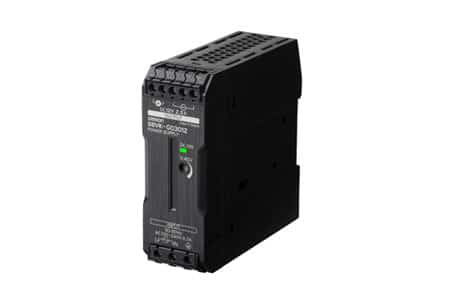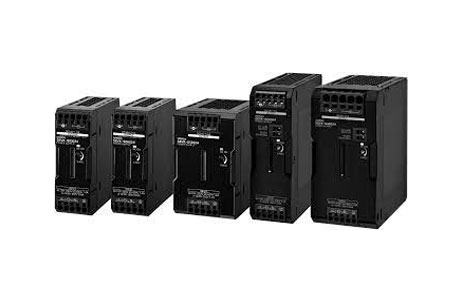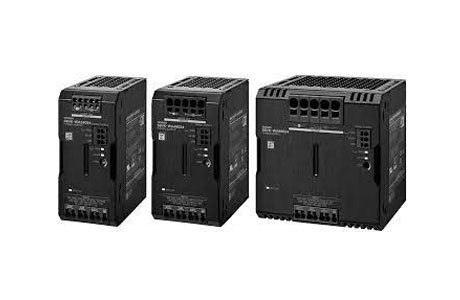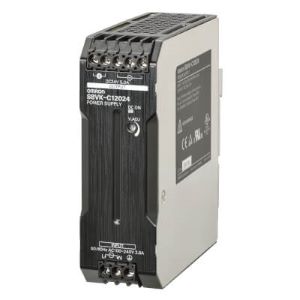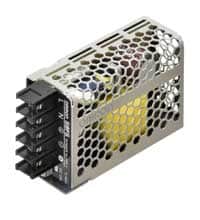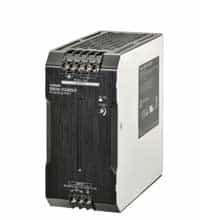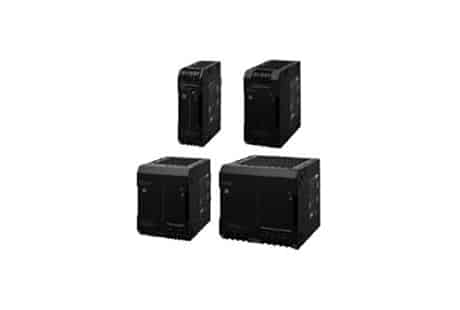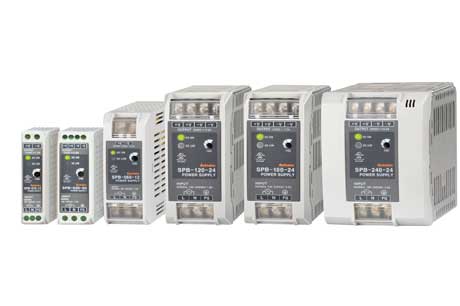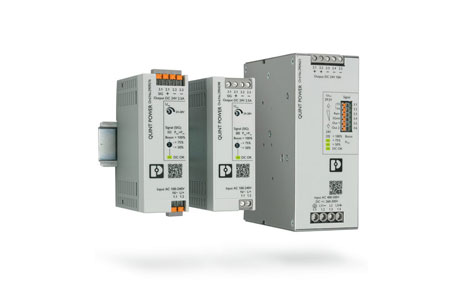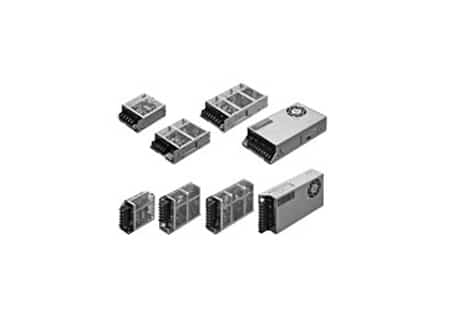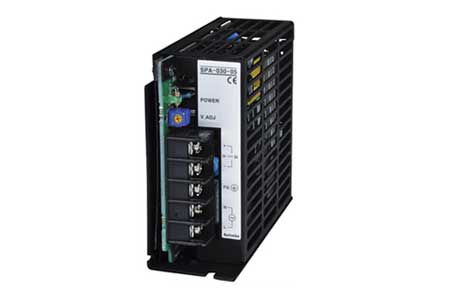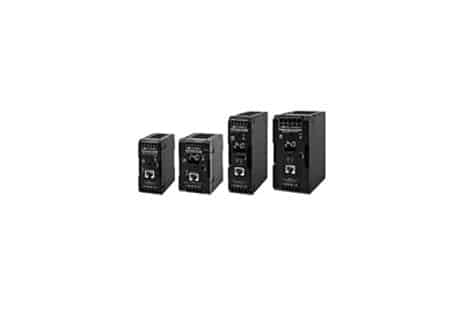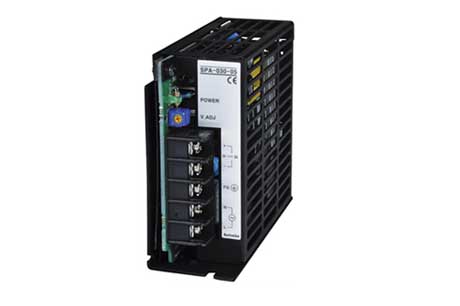Basic Switch Mode Power Supplies Guide
A power supply is an important part of electronics, giving them the power they need to work. Power supplies change electricity from a source, like a wall socket, into a form that the system’s parts can use.
They are important for keeping the system steady and reliable, and can greatly affect how well and efficiently the system works. As more industries need electronics and electrical systems, power supplies and their technology become more important.
This blog will provide a comprehensive overview of the basics of power supplies, focusing on Switch-Mode Power Supplies (SMPS).
What is Power Supply?
A power supply is a device that provides electrical energy to an electrical load. It’s basically a part that changes energy from one type to another and controls how electricity goes to the device.
Power supplies receive AC (alternating current) energy from the source, which fluctuates frequently. However, electronic devices typically require a steady and constant DC (direct current) voltage.
A power supply’s role is to provide controlled and regulated electrical energy to a system’s components. It accomplishes this by converting the incoming AC voltage into a regulated DC voltage, which is then supplied to the system. In doing so, it ensures that the system receives the correct voltage, current, and power to operate effectively and efficiently.
The power supply safeguards the system and its components by controlling and regulating the voltage, current, and power. This helps prevent damage and ensures the system’s stability and reliability.
What Does ‘Switching Mode’ Mean?
Switching mode refers to the method used by a power supply to regulate the voltage and current supplied to the load. Unlike a linear power supply, a switching mode power supply does not adjust the voltage’s strength. Instead, it achieves voltage regulation by rapidly switching the power on and off.
A switching mode power supply transforms the input AC voltage into a high-frequency signal known as pulse width modulation (PWM). This PWM signal is then used to control the power switches. The power switches turn the input voltage on and off rapidly, creating a series of high-frequency pulses. By controlling the width of the pulses, the power supply can regulate the output voltage and current supplied to the load.
Switching-mode power supplies are sometimes referred to as switch-mode regulated power supplies or simply switching power supplies. “Switching mode” is a way a power supply works, using special technology to control the voltage and current. This mode of operation provides several advantages over linear power supplies, including higher efficiency, smaller size, and lighter weight.
What is SMPS (Switch-Mode Power Supply)?
A Switch-Mode Power Supply (SMPS) is a kind of power supply. It uses a special method, called “switching mode,” to adjust and control the electricity it sends to the device. This means it changes the electricity voltage and current as needed.
SMPS technology has several advantages over other types of power supplies, such as linear power supplies. One of the key advantages of SMPS is its high efficiency. SMPS technology allows for efficient energy conversion, which results in less heat generated and less power wasted as heat. This makes SMPS a more energy-efficient and cost-effective option compared to linear power supplies.
SMPS are often smaller and not as heavy as normal power supplies. This makes them perfect for tiny devices that you can take with you. They can also adjust to slight changes in the electricity that comes in, so they can deal with different voltages. This makes them more flexible than regular power supplies that only work with one specific voltage.
History Of Switch Mode Power Supplies
The development of switched-mode power supplies (SMPS) dates back to the 1950s when the first experimental switching regulators were developed. These early switching regulators were large and complex, and they were only used in specialized applications.
In the 1960s and 1970s, improvements in electronic components and manufacturing processes led to the development of smaller, more reliable SMPS. These early SMPS were used in a variety of applications, including computers, Industrial Applications, Control Panels, televisions, and other consumer electronics. In Industries 90-95% of Machines can’t work without SMPS.
In the 1980s and 1990s, advances in power electronics and circuitry technology led to the development of compact, highly efficient SMPS.
For many years, SMPS technology has kept improving. Now, it’s used in all kinds of things, from small gadgets you can carry to big industrial systems. New electronic parts like high-frequency MOSFETs and integrated circuits have made it possible to create even smaller and better SMPS.
In recent years, the increasing demand for energy-efficient electronics has led to a renewed focus on SMPS technology. SMPS is used a lot now in places like data centers, green energy systems, and electric cars. This is because they work well, are small, and can be used in different ways.
SMPS Working Principle?
An SMPS works by turning a quick, pulsing direct current (DC) into a slower, steady direct current (DC). This conversion process is accomplished through several stages, including the input stage, switching stage, output stage, and control circuit.
Input Stage: The beginning of an SMPS turns changing current (AC) into a pulsing one-way current (DC). This DC input voltage is then filtered to remove any residual AC components.
Switching Stage: The switching stage is the heart of the SMPS. It has a high-speed switch, like a metal-oxide-semiconductor field-effect transistor (MOSFET), and a storage inductor. The switch quickly turns on and off to create fast pulses. These pulses are used to charge the storage inductor.
Output Stage: The last part of an SMPS is usually a step-down converter. It takes the fast, pulsed DC from the switch and changes it to the slow, steady DC output we want. This is accomplished through the use of a rectifier and filter circuit.
Control Circuit: The control circuit of an SMPS is responsible for regulating the output voltage and current. It looks at the output voltage and tweaks the switch’s speed and timing to keep the voltage and current constant.
An SMPS converts an incoming AC voltage into a regulated DC output. This conversion process involves four stages: the input stage, the switching stage, the output stage, and the control circuit. The high efficiency and compact size of SMPS make them ideal for a wide range of electronic and electrical applications.
Advantages and Disadvantages of SMPS
Advantages of SMPS
High Efficiency: One of the biggest advantages of SMPS technology is its high efficiency, which is typically around 80% to 95%. This process creates less heat and uses less power, which can save money and make electronic and electrical systems more reliable.
Compact and Light: SMPS are tiny and not heavy, making them great for small devices or areas with limited space.
Wide Input Voltage Range: SMPS can work with many different voltages, typically from 85-265V AC. This makes them handy for places with different electricity levels.
Disadvantages of SMPS
Noise Generation: SMPS can generate noise due to the high-frequency switching devices of the power supply. This noise can interfere with the performance of nearby electronic devices and systems.
Large Inrush Current: SMPS can have a power surge when turned on, causing issues.
Switch Mode Power Supplies (SMPS) have multiple benefits. These include high efficiency, a compact design, and a wide input voltage range. This makes them suitable for a variety of electronic applications. However, it’s crucial to consider drawbacks like noise generation and large inrush current when selecting an SMPS for a particular purpose.
Selection Methods for SMPS
Input Voltage: The input voltage required by the SMPS should match the available AC mains voltage. The SMPS should also have a wide input voltage range to accommodate variations in the AC mains voltage.
Output Capacity: This is the most important factor when you are going to select the SMPS for your application. The output capacity of the SMPS should meet the requirements of the electronic or electrical system it is powering. This includes the output voltage and output current. The SMPS should supply sufficient current to meet the system’s requirements while ensuring stability and preventing overload.
Protection Functions: SMPS should have protection functions to prevent damage to the system in case of over-voltage or overload conditions. Over-voltage protection is designed to protect against voltage spikes, while overload protection is designed to prevent damage from excessive current.
Shape/Design and Mounting Method: The SMPS should have a shape and design that aligns with the system’s needs. The mounting method should also be considered, as the SMPS should be easy to install and maintain.
Safety Standards: The SMPS should comply with relevant safety standards, such as UL, CE, and TUV. This helps to ensure the safety of the system and its users.
Careful consideration must be taken when selecting an SMPS. Factors to consider include input voltage, output capacity, current rating, voltage ratings, protection functions, shape/design, mounting method, and safety standards. By considering these factors, it is possible to choose the right SMPS for a particular application, ensuring optimal performance and reliability.
Isolated and Non-Isolated Switching Power Supplies
The two main types of SMPS are isolated and non-isolated. Isolated SMPS uses a transformer for electrical isolation between input and output circuits, while non-isolated SMPS lacks this isolation.
Advantages of Isolated SMPS
Electrical Isolation: The transformer’s electrical isolation in an SMPS safeguards the system against voltage spikes and other electrical issues, enhancing reliability.
Improved Safety: The electrical isolation also improves safety, as it reduces the risk of electrical shock or other safety hazards.
Higher Efficiency: Isolated SMPS are usually more efficient than non-isolated ones because the transformer can be designed for better conversion.
Advantages of Non-Isolated SMPS
Simplicity: Non-isolated SMPS are simpler in design, as they do not require a transformer.
Lower Cost: The simpler design of non-isolated SMPS makes them less expensive to produce than isolated SMPS.
Smaller Size: Non-isolated SMPS are typically smaller in size, as they do not require a transformer.
The choice between an isolated or non-isolated SMPS depends on the specific requirements of the application. Isolated SMPS offer improved safety, electrical isolation, and efficiency, while non-isolated SMPS are simpler, less expensive, and smaller.
Linear Vs Switched Mode Power Supply
Linear and switched-mode power supplies are two different technologies used to convert AC power into DC power. Linear power supplies employ a linear regulator to control the output voltage. In contrast, switched-mode power supplies utilize high-frequency switching to convert AC power into DC power.
Advantages of Linear Power Supplies
Low Noise: Linear power supplies are preferred in applications where minimal electrical noise is desired. This is because they are capable of producing low levels of noise.
High Accuracy: Linear power supplies are accurate. They keep the output voltage constant even if the input voltage or load changes.
Low EMI: Electro Magnetic interference (EMI) is low in linear power supplies, as they do not use high-frequency switching.
Advantages of Switched Mode Power Supplies
High Efficiency: Switched-mode power supplies are efficient at converting input power into usable output power.
Compact and Light: Switched-mode power supplies are small and lightweight, ideal for portable applications where size and weight matter.
Wide Input Voltage Range: Switched-mode power supplies have a wide input voltage range. This makes them suitable for many power supply applications.
The choice between a linear power supply and a switched-mode power supply depends on the specific requirements of the application. Linear power supplies are great for applications that need low noise, high accuracy, and low EMI. Switched-mode power supplies are better for applications that require high efficiency, compactness, and a wide input and output voltage range.
Types of Switch Mode Power Supply
SMPS are categorized by the type of power conversion: DC-DC, AC-DC, or AC-AC. Some of the most common types of SMPS are:
DC-DC Converter: A DC-DC converter changes the DC voltage from one level to another. It is commonly used to regulate the output voltage in battery-powered systems.
AC-DC Converter: An AC-DC converter is an SMPS that converts AC voltage from the mains to DC voltage. It is commonly used in industrial applications and electronic devices to provide regulated DC voltage from the AC mains.
Fly-Back Converter: A fly-back converter uses a fly-back transformer for voltage conversion. The fly-back converter is commonly used in low-power applications, such as LCD televisions and computer monitors.
Forward Converter: A forward converter is a type of SMPS that uses a forward transformer to perform the voltage conversion. The forward converter is commonly used in high-power applications, including power supplies for large electronic devices.
SMPS are classified into different types based on the type of conversion they perform. Various SMPS types, including DC-DC, AC-DC, fly-back, and forward converters, have both benefits and drawbacks. The choice of SMPS depends on specific application requirements.
Applications of SMPS in Various Fields
Switched-Mode Power Supplies (SMPS) are widely used in many fields due to their high efficiency, small size, and low weight. Some of the common applications of SMPS are:
Industrial Automation: SMPS powers equipment in industrial automation systems, including sensors, actuators, and control systems. The high reliability and efficiency of SMPS make them well-suited for use in harsh industrial environments.
SMPS are widely used in many fields due to their high efficiency, small size, and low weight. SMPS is versatile and finds applications in various fields like industrial automation, computers, electronics, telecommunications, medical devices, consumer electronics, and lighting.
Common Issues in SMPS and How to Troubleshoot Them
SMPS is commonly used but can face issues like other electronic equipment. Some of the most common issues that can occur with SMPS are:
No Output: The most common issue with SMPS is that it doesn’t produce any output. This can be caused by several factors, such as a blown fuse, a failed rectifier diode, or an open transformer winding. To troubleshoot this issue, check the fuse, the rectifier diode, and the transformer winding.
Low Output Voltage: Low output voltage in an SMPS may result from a faulty diode, capacitor, or low input voltage. To troubleshoot this issue, check the output rectifier diode, the filter capacitor, and the input voltage.
High Output Voltage: An SMPS’s high voltage could result from a bad feedback circuit, control IC, or wrong setting. To troubleshoot this issue, check the feedback circuit, the control IC, and the output voltage setting.
Output Ripple: Excessive SMPS voltage ripple might be due to a poor filter capacitor, power inductor, or high switch speed. To troubleshoot this issue, check the filter capacitor, the power inductor, and the switching frequency.
Overheating: Overheating is another common issue with SMPS. This can be caused by poor ventilation, a high ambient temperature, or a high load current. To troubleshoot this issue, check the ventilation, the ambient temperature, and the load current.
Common issues with SMPS can range from no output to overheating. Knowing common problems and their causes can help fix an SMPS. If you can’t fix it, get professional help for safe and reliable SMPS use.
Understanding the Importance of Power Supply
Power supply efficiency shows how much input power turns into useful output power, with the rest lost as heat. In other words, it’s the ratio of the output power source to the input power. The efficiency of a power supply is important because it affects the performance of an electronic system in several ways:
Energy Efficiency: A high-efficiency power supply uses less energy, saving a lot of power over time, especially in big systems. It also reduces the carbon footprint of the electronic system, making it more environmentally friendly.
Cooling Requirements: The amount of heat generated by a power supply is directly proportional to its efficiency. A power supply with high efficiency generates less heat, which reduces the cooling requirements for the electronic system. This can help to lower the operating costs and extend the life of the electronic system.
Performance: The performance of an electronic system is directly affected by the quality of the power supply. A high-efficiency power supply gives steady and clean power, helping electronics work their best. But a low-efficiency one can give uneven and noisy power, which can hurt performance and even damage the electronics.
Reliability: A high-efficiency power supply is usually more reliable because it makes less heat, a main cause of failure. It often also has extra safety features like over-voltage and over-current protection.
Power supply efficiency is a critical factor to consider when choosing a power supply unit for an electronic system. A high-efficiency power supply saves energy, needs less cooling, enhances performance, and boosts reliability, affecting how electronics work.
Power Supply Testing and Certification – Importance
Power supply testing and certification is an important process that ensures that power supplies meet safety and performance standards. This process is crucial for several reasons:
Safety: Power supplies can pose a safety hazard if they are not designed and manufactured to meet certain safety standards. Checking and approving power supplies make sure they’re safe to use and won’t cause electrical shocks, fires, or other dangers.
Performance: Power supplies are vital for electronics. Testing and certification ensure they meet the needed performance, like output voltage, current, and efficiency.
Compliance: Many places have rules saying power supplies must meet standards to be sold or used. Testing and approval help make sure they follow these rules, avoiding future problems.
Quality: Testing and approval confirm the power supply’s quality and show it’s made to meet high standards. This can help to increase customer confidence and reduce the risk of product returns and warranty claims.
Testing and certification of power supplies are important processes that ensure the safety, performance, compliance, and quality of these critical components.
Summary
Switch-Mode Power Supplies (SMPS) have changed electronics and electrical systems a lot. They offer high efficiency, small size, and work with many different input voltages.
It’s important for engineers and technicians to understand how SMPS work, their types, pros and cons, and uses. This helps them pick the best power supply for their systems.
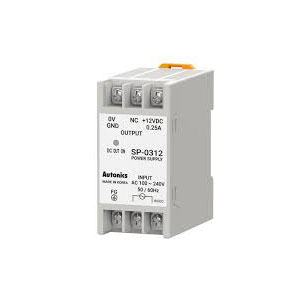
Key factors when choosing an SMPS, such as input voltage, output size, safety, shape, installation, and standards, have been thoroughly explained. Additionally, the blog highlights the importance of power supply design efficiency and the significance of testing and certification.
In total, this blog gives a deep look at SMPS technology and how it has changed electronics and electrical systems.

